This Easter we are happy to share a talk from our teacher, Thich Nhat Hanh, offered on 20 April 2014. The full talk is available to listen to here.
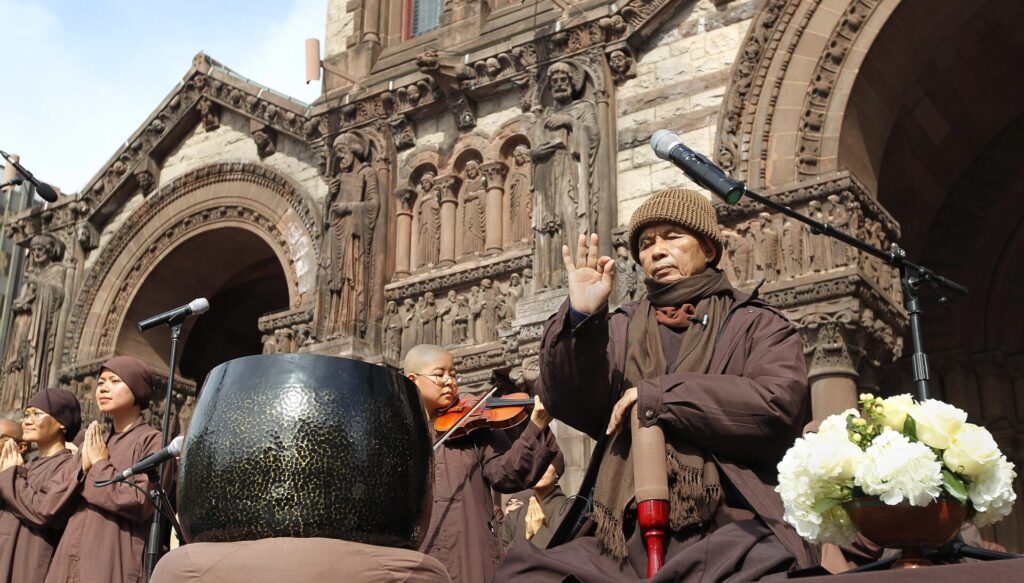
Today is a very special day – the resurrection of Jesus Christ.
People live as if they are dead. But if they know how to breathe mindfully and walk mindfully, they are resurrected. Resurrection is a practice. If Jesus Christ could do it, then we human beings like him can also do it. Jesus is the son of God and also the son of men and a child of the Earth. We are also the sons and daughters of men and children of God. We can always come back to life by practicing awakening, mindfulness.
From a state of forgetfulness you pass into a state of mindfulness in just a few seconds by making a mindful step or taking one mindful in-breath. Then the miracle of resurrection happens. Resurrection is not a belief or a dogma; it is a practice. Learning how to breathe mindfully, walk mindfully, eat mindfully, drive mindfully; we become awakened people, alive people, and we have the chance to live deeply every moment that is given us in our daily life. We do not live as dead people anymore.
If we look around us, we see that many people are circulating around but are not truly alive because they do not have that awareness. If you are someone who is awake, you can help them to wake up and be alive again. The practice is simple. To be alive is possible. To give our life real value, real quality is possible.
When we wake up to the beauty and wonders of life, we can get in touch with these wonders that are full of the power to heal and to nourish. All of us need nourishment and healing. If we bring ourselves back home to the here and the now, we can get in touch with those refreshing, healing, and nourishing elements of life. If we can do it for ourselves, we can help those around us to do the same. We wake up to the fact that joy and happiness are possible, they are not just dreams or projects.
As practitioners of mindfulness, we know how to generate a feeling of joy and happiness whenever we want. The principle is very simple. When we breathe in mindfully and bring our mind back home to the body, we are established in the here and now. We recognize that we have many conditions to be happy right here and now, we do not have to run into the future to look for more. With this kind of understanding and awareness, to create a feeling of joy and happiness is always possible. One in-breath or one step made in mindfulness can already bring us happiness, with the insight that we are alive, it is a wonder to be alive and to be walking on planet earth. Happiness is possible. Joy is possible.
When we come home to the here and now, we might get in touch with suffering. Suffering is a reality. There is suffering in us and in the world. We wake up to the suffering of ourselves and of humanity, of the world. Most of us do not want to acknowledge the suffering in us. Our suffering may have been transmitted to us by our father, our mother, our ancestors. They might not have been able to transform their suffering and that is why it has been transmitted to us. Therefore sometimes we suffer and we do not know why we suffer like that.
With mindfulness we can recognize the suffering in us, in our nation, in the world. The practice of mindfulness helps us to calm down the suffering, to bring relief and to transform it. With mindful breathing and walking, we have enough energy of mindfulness and concentration to recognize the suffering in us and to embrace it tenderly, we feel relief and we suffer less.
If you know the practice well you can go further; you are able to transform the suffering into something more positive, like making good use of mud in order to grow lotus. There is a deep connection between suffering and happiness. Suffering is an art and with some training, you find out that if you know how to suffer, you suffer much less. Using the energy of mindfulness and concentration you embrace your suffering, you calm it down, and you suffer much less. You can make good use of suffering to create joy and happiness.
When you read the Gospel according to Luke, you see that Jesus was aware that suffering is important.
Jesus Christ knew this. He knew that we have to go through suffering, to learn from suffering, and to make good use of suffering in order to create happiness. When you read the Gospel according to Luke, you see that Jesus was aware that suffering is important. If we don’t know this, we always try to run away from suffering and cannot make good use of it to create well being and happiness.
That Sunday, three days after the death of Jesus Christ, many disciples of him came to the tomb and found that his body was not there. Two of them were walking to a village called Emmaus about six kilometres from Jerusalem and they talked about the miracle, the death of Jesus. Walking with them was another man who did not say anything.
These two disciples did not know the art of mindful walking. They just talked. The man walking with them did not talk and at one point, he asked, “What are you talking about gentlemen?” Cleopas said, “Are you a stranger to Jerusalem? Everyone knows what happened in the last two days. Jesus was crucified. He died and this morning he came back to life again.” Jesus told them, “Don’t you know that the son of men has to go through that kind of suffering in order to come to his glory?”
“Was it not necessary that the Messiah should suffer these things and then enter into his glory?” (Luke 24:26) This proves that Jesus knew the role of suffering. If you don’t go through suffering, you do not understand suffering. If you don’t know how to make good use of suffering, you cannot reach wellbeing, reach the glory that you deserve.
They continued to walk and it was dark, but the two friends wanted to stop at an inn and invited the third one to join them. When they came to the inn, resting and having dinner together, the third man began to break the bread and serve the wine. Through those gestures they recognized that he is Jesus Christ because only Jesus Christ can break the bread and serve the wine in that way.
You walk with Jesus many miles but you do not recognize him until you see him break the bread and give it to you, because his way of doing that is very special, very mindful. In Plum Village we have a sentence – “The bread in your hand is the body of the cosmos”. When you hold a piece of bread, you have to hold it with your utmost respect. The whole cosmos has come together to offer you this piece of bread. It is like the eucharist in the Christian tradition. When the priests break the bread, they say that this is the body of Jesus. In Plum Village we say this bread is the body of the cosmos because the sun, moon, and earth have come together to bring us this piece of bread. If you hold the bread like that and you give it to your friend, that is the way of the Buddha the way of Jesus Christ.
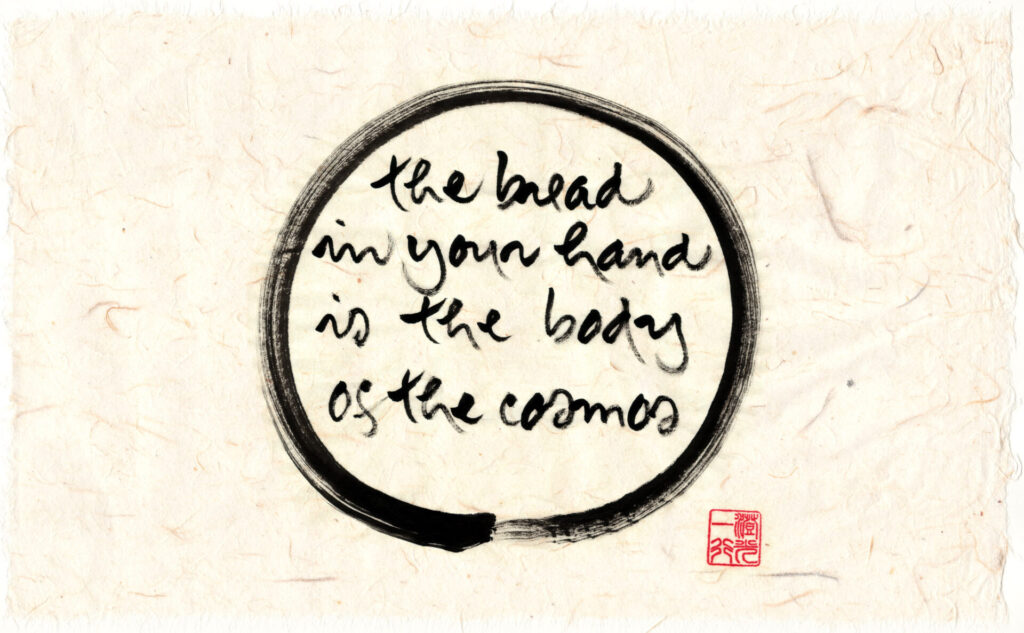
You can listen to the full audio of this Dharma talk on the Thich Nhat Hanh Audio website here or via the Plum Village App here.


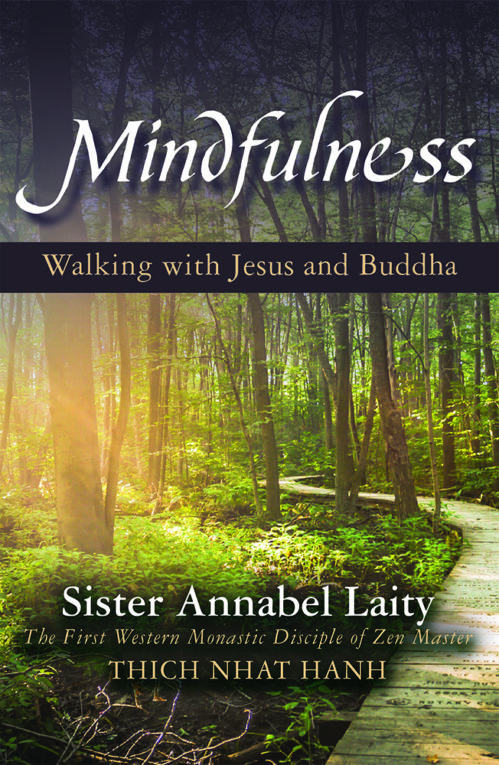
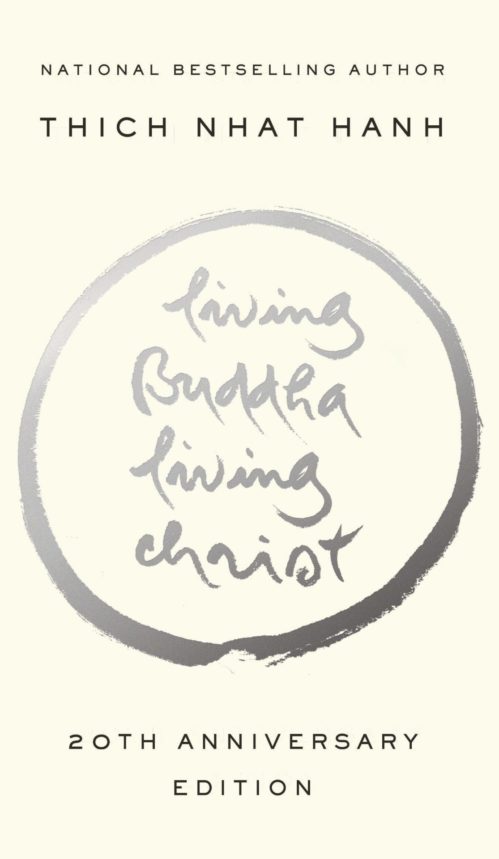
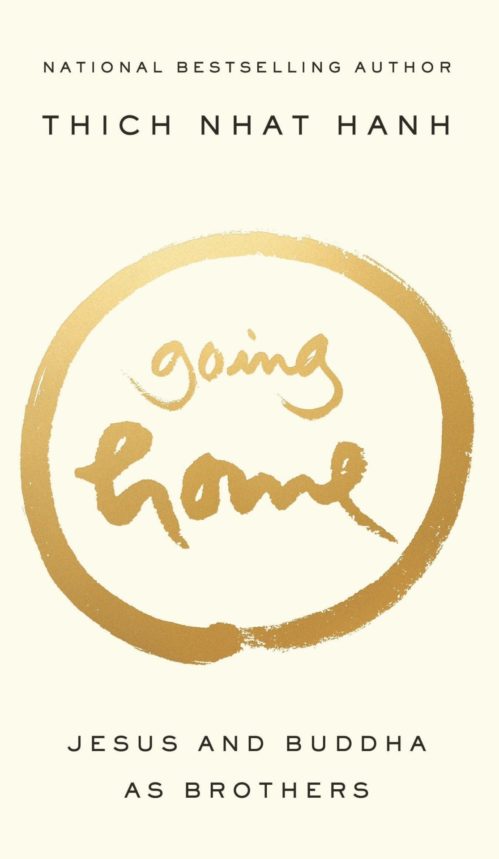

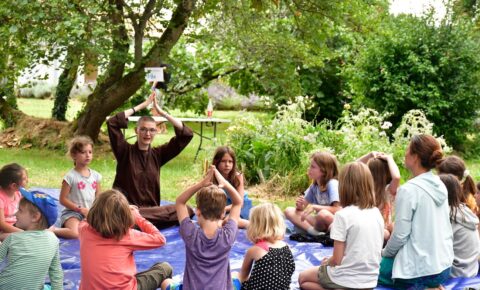
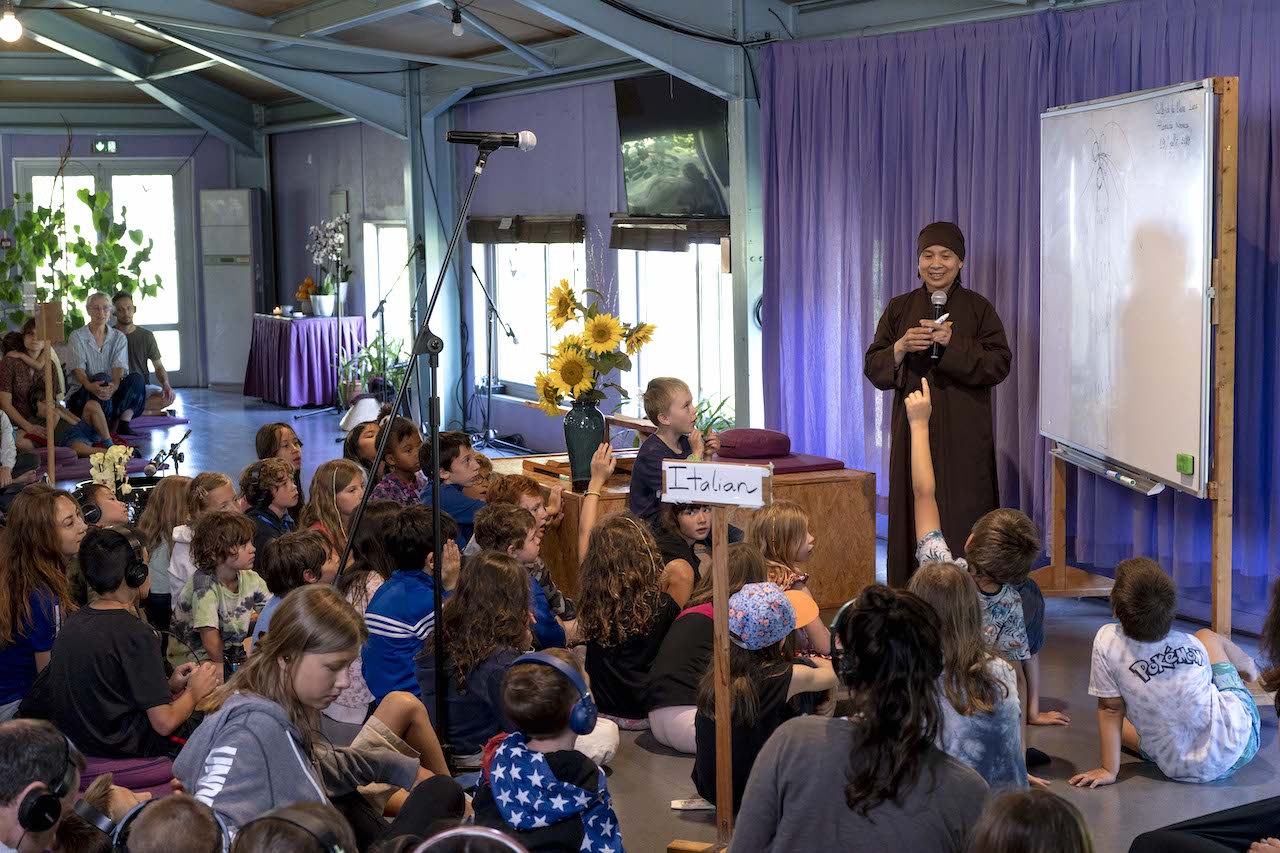
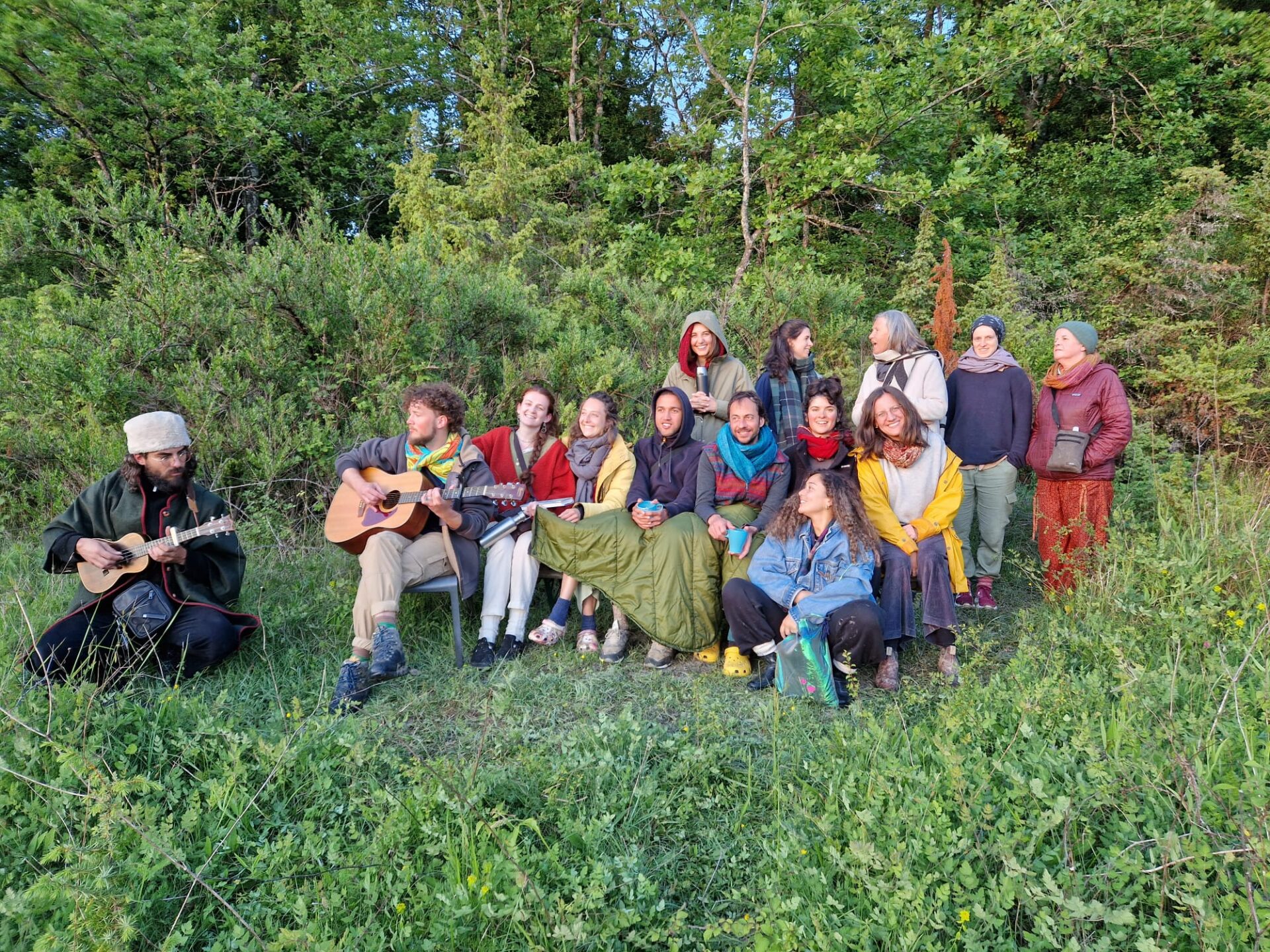
Join the conversation